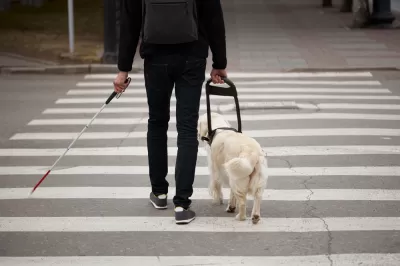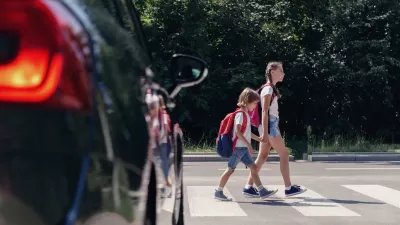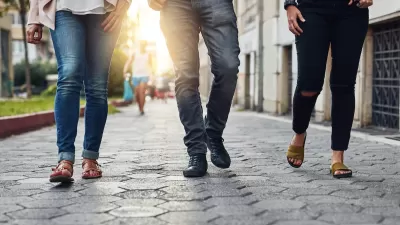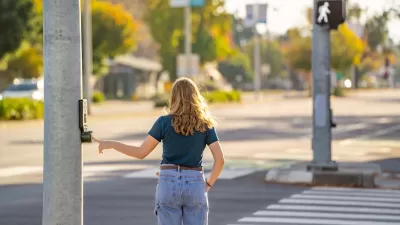For people with disabilities or limited mobility, a lack of safe infrastructure can cause significant disruptions, delays, and safety hazards.

Writing in Next City, Anna Zivarts, director of the Disability Mobility initiative at Disability Rights Washington, stresses the significance of improving road conditions for people with disabilities.
As Zivarts points out, “I hate the term ‘vulnerable road users’ because of its paternalism and the agency it takes away from those of us outside of vehicles, but the reality is we are less safe than the people in vehicles.”
Maybe there’s no stoplight, no stop sign, no crosswalk or curb ramps. Maybe there is a light but there’s no audible signal or the countdown isn’t long enough, especially if we have to dodge cars making right turns. Maybe we know cars go too fast and regularly blow through lights, and we’ve been hit or almost hit, or know someone who has.
For Zivarts, making conditions safer for people with disabilities means improving roads for everyone and “fighting for every street to be somewhere you want to walk or roll along.” Zivarts points to traffic calming projects that slow traffic in neighborhoods to make streets safer for non-drivers. In Seattle, for example, the city employs one-way streets in some neighborhoods to reduce vehicle speeds. Zivarts posits that this type of strategy should be employed at a larger scale. “What if slow speed streets were the default for our cities?”
FULL STORY: It’s Not Just Highways. The Time For Street Reform Is Now.

Study: Maui’s Plan to Convert Vacation Rentals to Long-Term Housing Could Cause Nearly $1 Billion Economic Loss
The plan would reduce visitor accommodation by 25,% resulting in 1,900 jobs lost.

Alabama: Trump Terminates Settlements for Black Communities Harmed By Raw Sewage
Trump deemed the landmark civil rights agreement “illegal DEI and environmental justice policy.”

Why Should We Subsidize Public Transportation?
Many public transit agencies face financial stress due to rising costs, declining fare revenue, and declining subsidies. Transit advocates must provide a strong business case for increasing public transit funding.

Paris Bike Boom Leads to Steep Drop in Air Pollution
The French city’s air quality has improved dramatically in the past 20 years, coinciding with a growth in cycling.

Why Housing Costs More to Build in California Than in Texas
Hard costs like labor and materials combined with ‘soft’ costs such as permitting make building in the San Francisco Bay Area almost three times as costly as in Texas cities.

San Diego County Sees a Rise in Urban Coyotes
San Diego County experiences a rise in urban coyotes, as sightings become prevalent throughout its urban neighbourhoods and surrounding areas.
Urban Design for Planners 1: Software Tools
This six-course series explores essential urban design concepts using open source software and equips planners with the tools they need to participate fully in the urban design process.
Planning for Universal Design
Learn the tools for implementing Universal Design in planning regulations.
Smith Gee Studio
Alamo Area Metropolitan Planning Organization
City of Santa Clarita
Institute for Housing and Urban Development Studies (IHS)
City of Grandview
Harvard GSD Executive Education
Toledo-Lucas County Plan Commissions
Salt Lake City
NYU Wagner Graduate School of Public Service





























